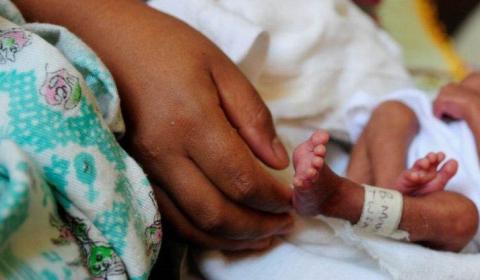The 2023 Lancet series on ‘small and vulnerable newborns’: A quick overview
This is a summary of the 2023 Lancet series on small and vulnerable newborns: Small vulnerable newborns (2023) The Lancet. https://www.thelancet.com/series/small-vulnerable-newborns
The foundations of human wellbeing are laid before birth. Unfortunately, many babies experience adversities during this intrauterine period. Consequently, they can be born preterm (<37 weeks of gestation) or suffer foetal growth restriction and be born small for gestational age (SGA). Both preterm birth and foetal growth restriction can result in low birthweight (LBW, <2500g). Children who are born preterm, SGA, or with LBW have a markedly increased risk of stillbirth, neonatal death, and later childhood mortality. Additionally, these conditions are associated with multiple morbidities with short- and long-term adverse consequences, for newborns, their families, and society at large, resulting in a major loss of human and economic capital.
This Lancet series presents a new conceptual framework that brings preterm birth, SGA, and LBW together under the term 'small vulnerable newborns' (SVN) and makes the call that prevention of preterm and SGA births is critical for global child health and for societal development.
The first paper (Ashorn et al, 2023) looks at the current situation, making the case for this new concept of an SVN, revisiting some of the definitions around vulnerability, and aiming to ensure these newborns are cared for better. The second paper (Lawn et al, 2023) depicts SVN epidemiology - the patterns of disease and where that disease may occur. The third paper (Hunter et al, 2023) looks at the biological mechanisms that underpin some of the SVN. For the fourth paper, Hofmeyr et al (2023) reviewed the literature to identify what interventions existed and came up with a list of eight interventions that could be used to reduce and mitigate the burden of SVN: multiple micronutrient supplementation, balanced protein and energy supplementation, low-dose aspirin, progesterone provided vaginally, education for smoking cessation, malaria prevention, treatment of asymptomatic bacteriuria, and treatment of syphilis. If fully implemented in 81 low- and middle-income countries, those preventive interventions could prevent 5.2 million SVN births and 0.6 million stillbirths every year.
In a final commentary, Mohiddin et al (2023) provide a call for action based on three pillars: making SVN prevention a priority, getting the proven interventions scaled up, used globally, and into existing guidelines, and finally improving measurement and accountability.
In response to this call for action, Marie McGrath, Emergency Nutrition Network's Technical Director and Co-Chair of the MAMI Global Network - and a familiar face as a former Editor of Field Exchange - responded with her views on the series from a MAMI perspective (www.ennonline.net/fex/70/the-lancet-small-vulnerable-newborns-series-reflections-from-a-mami-perspective), in a must-read for contextualising this important piece of work.
References
Ashorn P, Ashorn U, Muthiani Y et al. (2023) Small vulnerable newborns - big potential for impact. The Lancet, 401, 10389, 1692-1706.
Hofmeyr GJ, Black RE, Rogozinska E et al. (2023) Evidence-based antenatal interventions to reduce the incidence of small vulnerable newborns and their associated poor outcomes. The Lancet, 401, 10389, 1733-1744.
Hunter PJ, Awoyemi T, Ayede AI et al. (2023) Biological and pathological mechanisms leading to the birth of a small vulnerable newborn. The Lancet, 401, 10389, 1720-1732.
Lawn JE, Ohuma E O, Bradley E et al. (2023) Small babies, big risks: Global estimates of prevalence and mortality for vulnerable newborns to accelerate change and improve counting. The Lancet, 401, 10389, 1707-1719.
Mohiddin A, Semrau KE, Simon J et al. (2023) The ethical, economic, and developmental imperative to prevent small vulnerable newborns and stillbirths: Essential actions to improve the country and global response. The Lancet, 401, 10389, 1636-1638.


